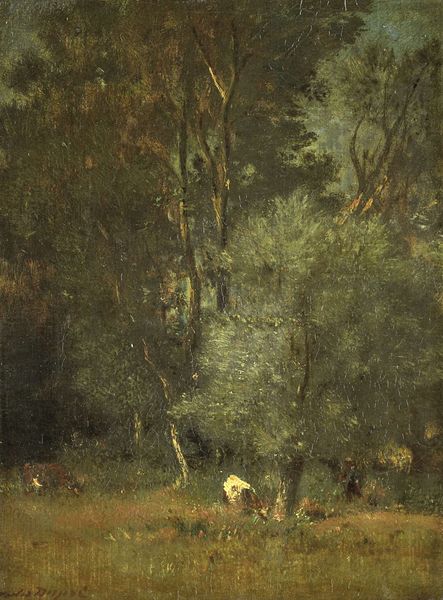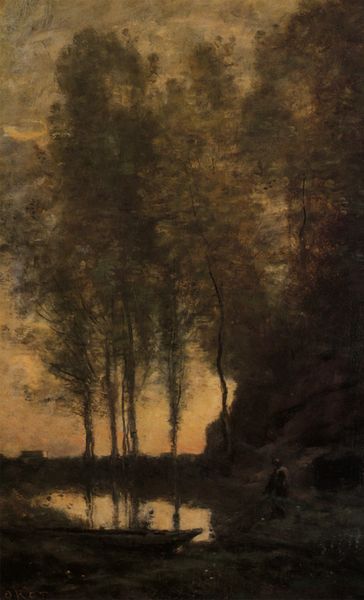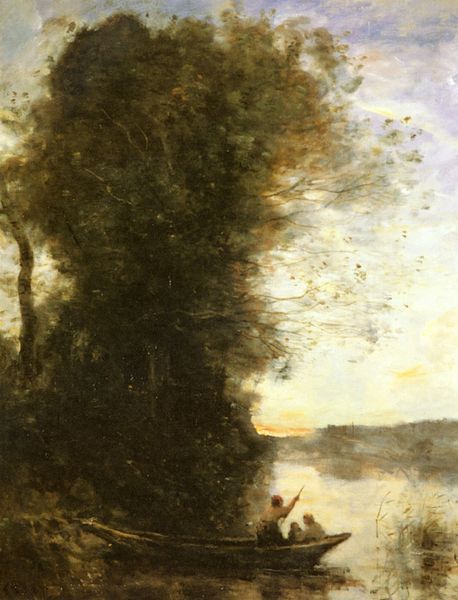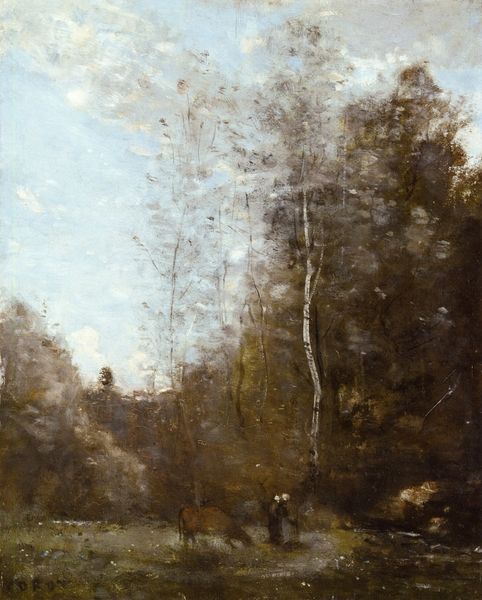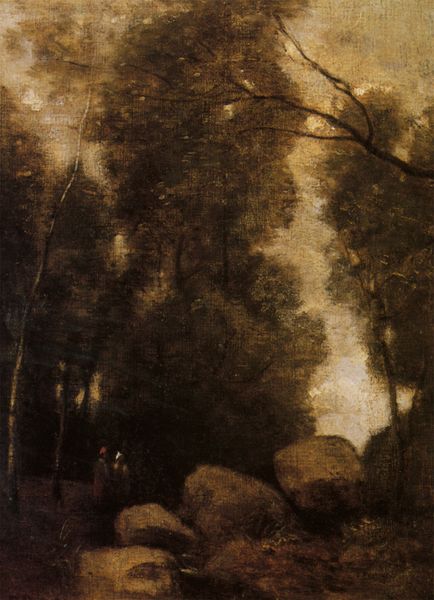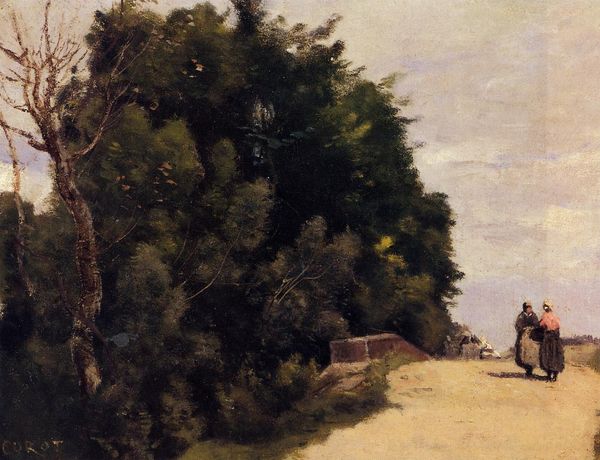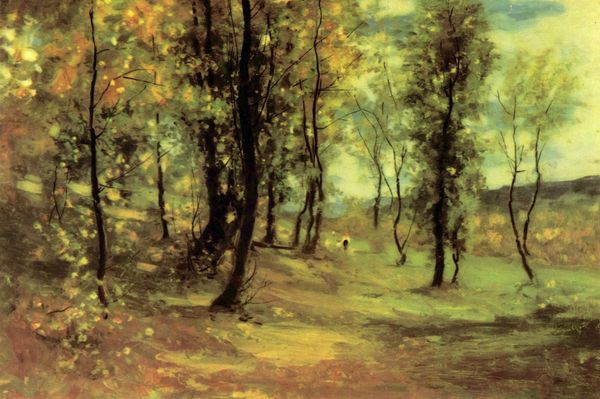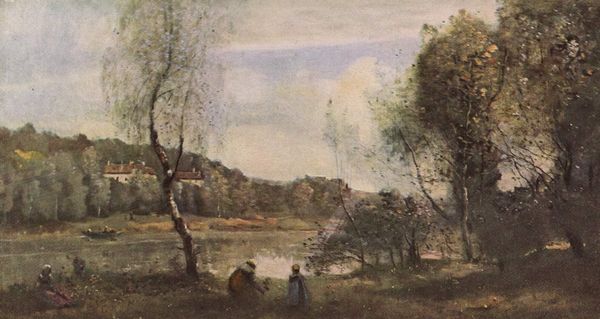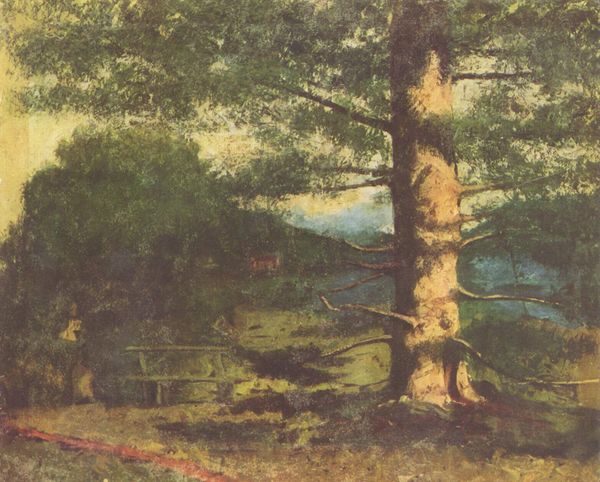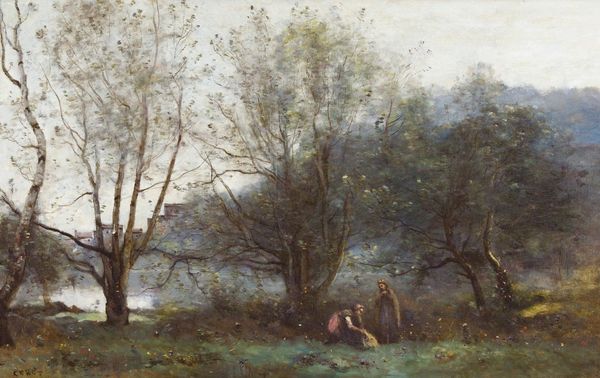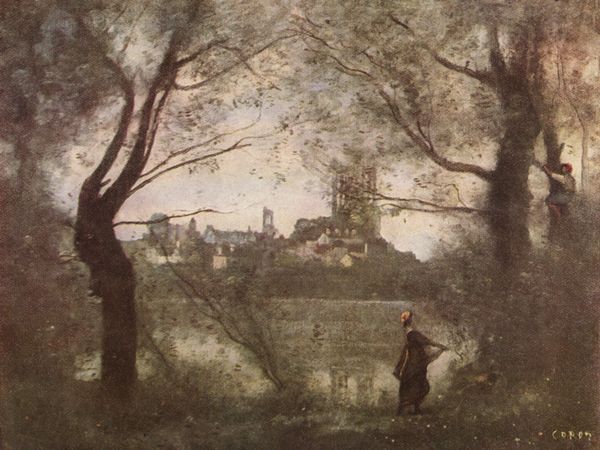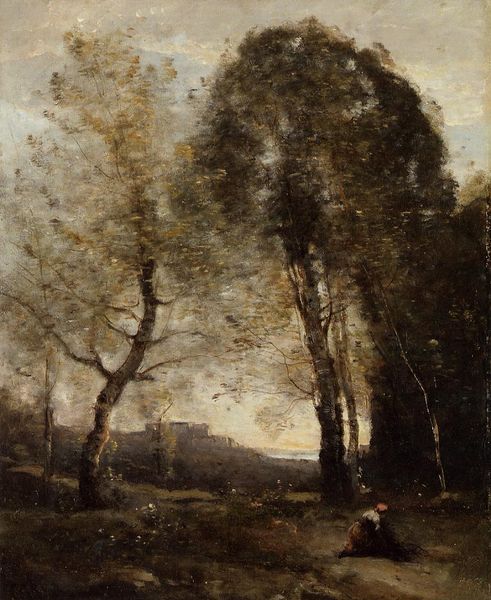
Dimensions: 46 x 38 cm
Copyright: Public domain
Editor: So, this is Camille Corot's "Recollections of Pierrefonds" from 1861, an oil painting seemingly made "en plein air". The soft, muted tones create a dreamy, almost melancholic atmosphere. What stands out to you in this landscape? Curator: For me, it's the tension between the natural and the built environment that is very revealing. Look closely at how Corot juxtaposes the rugged materiality of the forest foreground – clearly rendered with thick impasto – against the almost ethereal rendering of the castle in the distance. Editor: Yes, the castle seems to dissolve into the mist. What does this contrast tell us? Curator: It’s indicative of a shift in the means of production. Corot is documenting the effects of industrialization. Here you have the rise of industrial-military complex represented by the castle with what it replaces: the forest and rurality and craftsmanship. Editor: The figures walking in the lower-left, are they important in your view? Curator: Absolutely, look at their size. They look like mere consumers, out for a Sunday stroll. Their existence depends on those modes of production as represented by that same factory. That’s something the traditional landscape doesn’t provide. Editor: That is a fascinating reading of how it connects to labor! I've never thought about landscapes in that way. Curator: Material analysis allows us to move beyond the surface and engage with the deeper socio-economic forces at play. Think about how the materials themselves – the paint, the canvas – were becoming increasingly accessible due to industrial manufacturing, influencing artistic practice itself. Editor: I see how looking at the materials and production can provide another interpretation that would have remained hidden. Curator: Precisely. And, hopefully, it encourages us to question the role of art within broader networks of production and consumption.
Comments
No comments
Be the first to comment and join the conversation on the ultimate creative platform.
